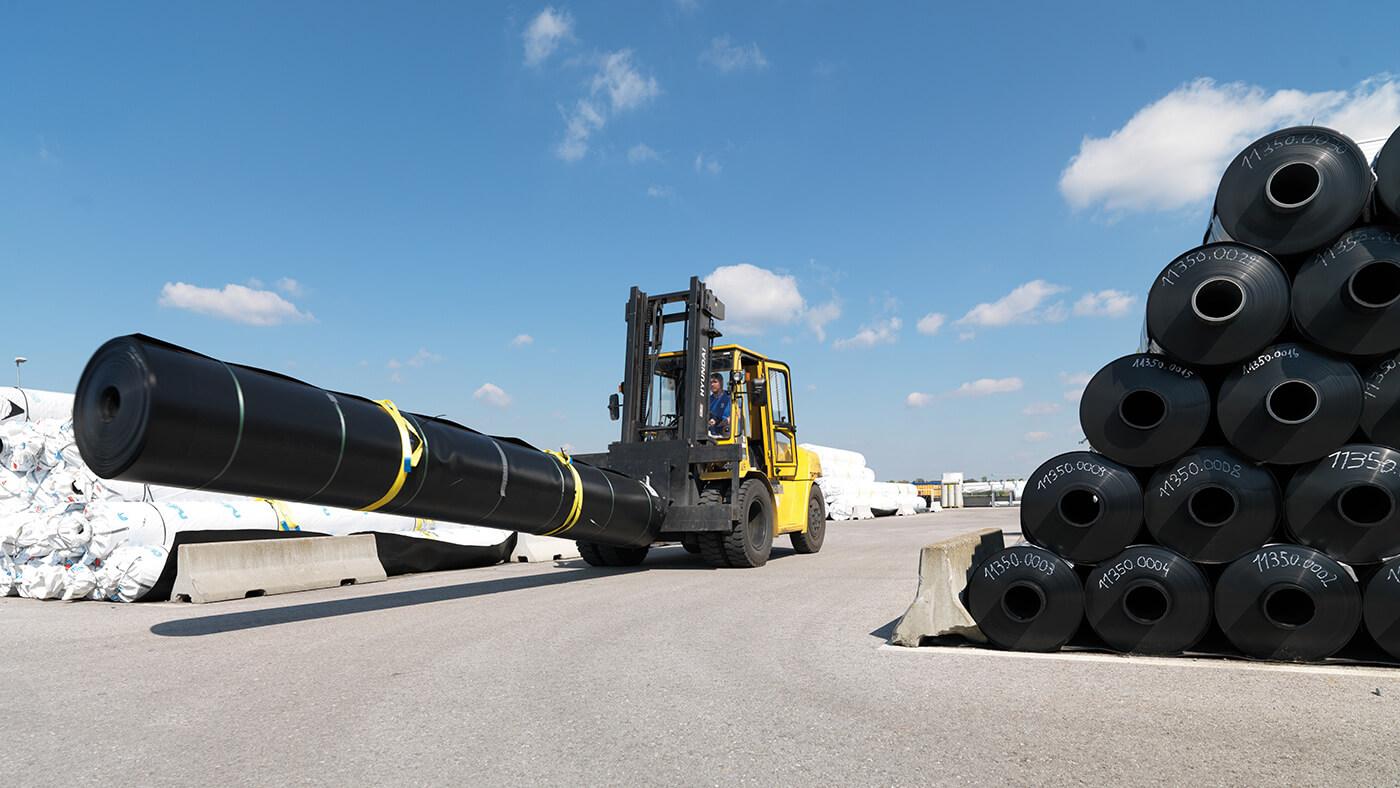Geomembranes: Essential Material for Water and Environmental Management

What are Geomembranes?
They are synthetic membrane barriers used in construction projects to isolate or contain liquids and solids. They are manufactured in thicknesses ranging from 1-5 mm using materials like high-density polyethylene (HDPE), linear low-density polyethylene (LLDPE), polyvinyl chloride (PVC), polyethylene, or polypropylene.
Physical Properties
They have high tensile strength and puncture resistance making them ideal for applications requiring physical barriers. Their enhanced elasticity allows them to conform to irregular surfaces without tearing. Modern geomembranes also have excellent resistance to weathering, ultraviolet radiation, and chemical degradation which enables them to maintain integrity over long periods of time when exposed to outdoor environmental conditions.
Durability and Long Service Life
The tough and durable composition of them means they can withstand stresses from overlying materials, settlements, and extreme weather without damage. With proper installation and protection, modern polyethylene and polypropyrene Geomembrane can provide an effective barrier for tens to hundreds of years. This long service life makes them highly cost-effective compared to traditional earthen liners which may require replacement after several decades.
Applications in Water Management Projects
They are extensively used in water containment and pollution control projects. Some common applications include -
- Reservoir and canal liner systems to prevent seepage losses and maintain water quality.
- Landfill liner systems beneath waste deposits to isolate leachate and prevent groundwater contamination.
- Debris basin and sediment pond liners for erosion and flood control.
- Canal siphon liners to enable water transfer through embankments.
- Containment at industrial and mining sites for liquids, sludge and residues.
- Below-ground vault seals and underground tank seals.
The continuous barrier provided by geomembranes is highly effective for managing water and preventing pollution ingress or egress from containment areas.
Usage in Earthwork Projects
They enable earthworks to be carried out with greater precision and safety. Some key earthwork applications include -
- Soil retention systems for cuts, piles and slopes to fortify embankments.
- Underseepage control in earth dams and levees through complete sub-surface sealing.
- Barrier mats under land development sites to isolate new infrastructure from moisture.
- Wetland restoration liner systems to maintain hydrology and habitat.
- Soil vapor barriers below slabs-on-grade inbrownfield remediation.
The impervious sealing properties of geomembranes prevent issues like erosion, piping, and contamination during and after earthworks are completed.
Get more insights on Geomembrane
- Art
- Causes
- Crafts
- Dance
- Drinks
- Film
- Fitness
- Food
- Spiele
- Gardening
- Health
- Startseite
- Literature
- Music
- Networking
- Andere
- Party
- Religion
- Shopping
- Sports
- Theater
- Wellness
- IT, Cloud, Software and Technology


